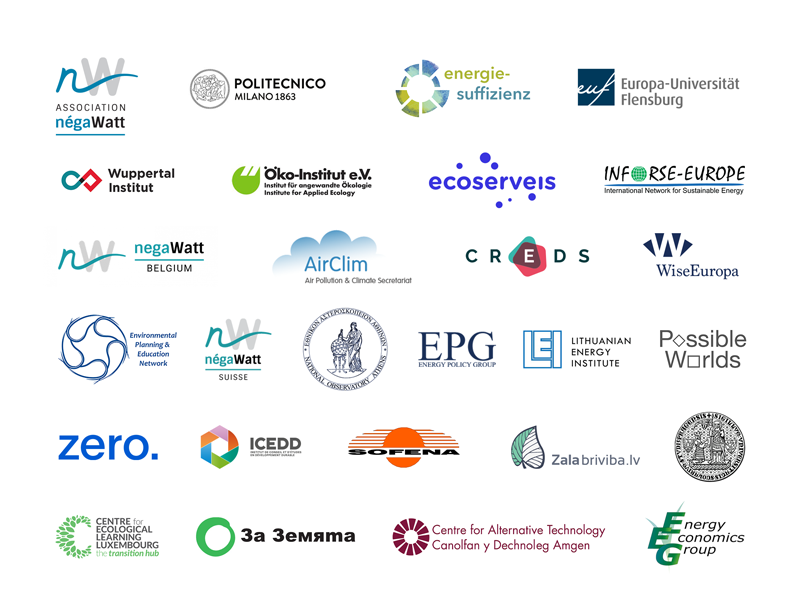A large and diverse network
CLEVER is a scenario developed under the leadership of the négaWatt association in France through a dialogue with national and European scenario builders from diverse organisations (think-tanks, research institutes, technical universities, civil society organisations, etc.), with the aim to aggregate national visions into a European one.
The CLEVER network includes 26 partners from 20 European countries, with different levels of involvement in the project:
● active partners having built their trajectories bottom-up,
● commenting partners having commented trajectories built top-down,
● observing partners participating in the broader exchange).

A bottom-up methodology
The CLEVER pathway was developed through a dialogue with national scenario makers in order to aggregate national visions into a European one and thus increase the feasibility of concrete transformations. The CLEVER scenario therefore fully takes into account national specificities, while also looking at optimisation gains of a coordinated action at the European level.
Between 2019 and 2023, the national partners have been engaged in a technical dialogue to ensure the collective development of this project.
This process allowed to question their work and modelling approaches, and share best practices, which results in built-up capacity and raised ambition. Thematic working groups and methodological meetings have also been regularly organised the project.
The “Sufficiency – Efficiency – Renewables” approach
The CLEVER pathway has been built through an innovative three steps approach:
The modelling starts with the definition of energy demand in every consumption sector (mobility, buildings, food, etc.). This modelling follows a sufficiency approach.
🔗 more information here 
The intensity of this demand is optimised thanks to improvements to energy efficiency. Appropriate energy carriers are also chosen to optimise the decarbonisation of energy while respecting other sustainability issues (minimisation of raw material footprint, pollution, etc.). 
The resulting energy production needs are fulfilled through renewable energies.

